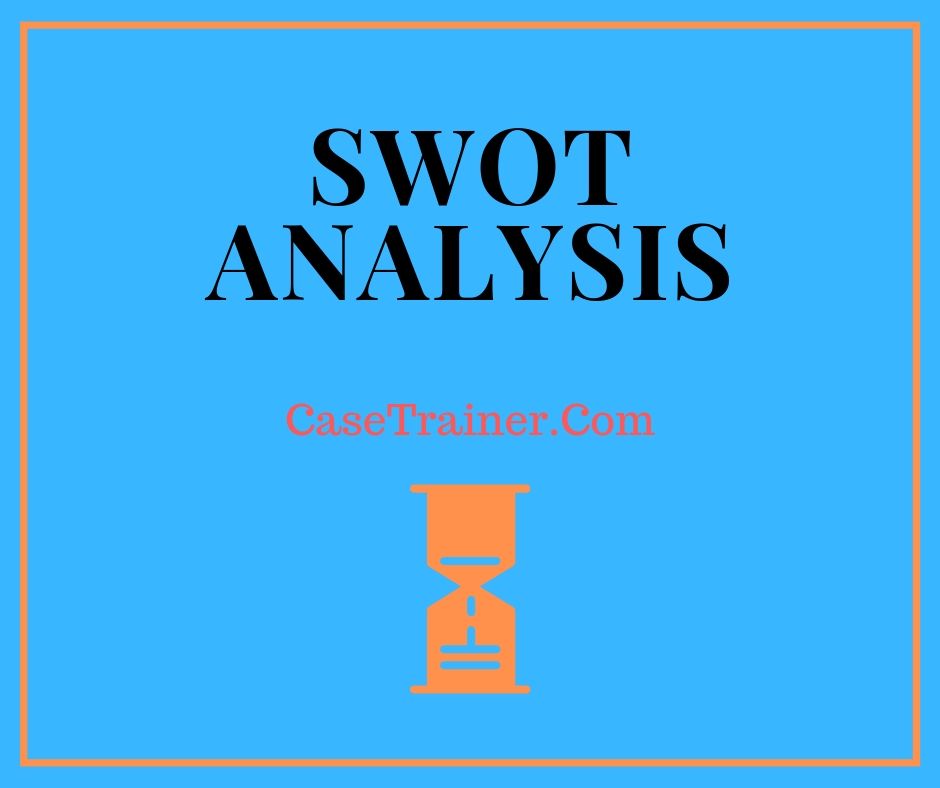The Regina Company Case Study Solution and Analysis
Intro
The Regina Company Case Study Analysis is the largest publishing business with a greatest market share in the China's book retail market. CMP offers a variety of services including; gathering details, processing details and interaction services. Major company sectors of the company consist of; books, periodicals, consultancy and circulation. The company has a huge product portfolio and its significant products consist of books, regulars, online media, exhibits, research reports etc. The Regina Company Case Study Help has actually become a specialized details service provider and a large comprehensive Science and Innovation publishing business through the integration of print media, audio-visual media and the network media.
Important Concerns
Although, The Regina Company Case Study Help has spent its 60 years journey smoothly, being a successful publishing home, however, the altering macro market patterns and forces bring certain challenges to the publishing market in general and CMP in particular. These elements include;
• Entrance of the brand-new publishing companies in the industry.
• Decreasing development of the publishing market.
• Market saturation.
• Intro of digital publishing strategies
• Improvement of science and technology.

The change of the macro markets have raised a number of questions to the management at CPM that what could be the future of CMP in this circumstance? Do the long important experience, technical resources and the abilities of the company could be used to strive for the future advancement unceasingly? How could the business sustain its long term competitive position in future?
Situational Analysis
Internal Analysis
SWOT Analysis
Strengths
The Regina Company Case Study Solution has certain strengths that can be made use of to reduce the risks, conquer the weakness and get the opportunities. Strengths of CMP are given as follows;
• The long term experience of The Regina Company Case Study Help in the publishing market i.e. 60 years permits the company to offer high quality items at a lower cost using its previous experiences.
• The technical resources and abilities generated by its effective journey provide a competitive advantage to CMP.
• Huge item portfolioof CMP assists it to diversify its risk and offer high value to its customers.
• Strong financial position allows the business to consider a number of advancement chances with no fear of raising fund externally.
Weaknesses
Together with the strengths, the business has particular weak points which might increase restrictions for the business in executing its advancement program. The weak points of The Regina Company Case Study Solution are offered as follows;
• Despite of being a science and innovation publishing company, the business still has conventional methods ofpublishing which are not compatible with the growing technological shift.
• CMP extremely relies over the Chinese markets for its growth. It should propose particular growth strategies to avoid its dependence over the Chinese markets to achieve long term development.

Opportunities
Although, the development of the publishing industry is declining since 2008, impacting The Regina Company Case Study Help as well, but the development might be restored by availing certain chances provided in the market. The marketplace opportunities for CMP consist of;
• The company could also introduce Digital Publishing by using its long term technical experience and a strong client recognition in the market.
• CMP might consider a development program through the expansion towards foreign markets in order to lower its reliance over Chinese markets by using its huge financial resources.
Dangers
The changing macro trends in the market and increasing competition in the publishing market has postured particular hazards to The Regina Company Case Study Help consisting of;( Gurel, 2017).
• Intro of digital publishing i.e. virtual libraries might cause declining market share of The Regina Company Case Study Analysis due to the customer shift towards digital libraries.
• The presence of a great deal of rivals in the publishing market increase the danger for CMP to lose its competitive position in the market, as rivals can gain a strong customer base by utilizing certain strategies like aggressive promotion, quality products, etc.
• Entrance of brand-new publishing companies in the industry together with existence of high competition increases the risk of losing the consumer base.
Financial Analysis.

Due to lack of information, the financial ratios of CMP might not be calculated. It could be analyzed from the Appendix III that the yearly total revenues of The Regina Company Case Study Analysis during the period 2000-2012 are growing at a high development rate, revealing that the annual need of the products of CMP is growing and the business is rather efficient in bring in a big number of clients at a potential cost.
Together with it, the 2nd graph which reveals the annual development in the The Regina Company Case Study Analysis overall assets, reveals that the business is rather efficient in including value to its assets through its incomes. The growth in possessions reveals that the total value of the firm is also increasing with increasing the total revenues. (Unidentified, 2013).
Another monetary analysis of the company using the offered data might be the analysis regarding the circulation of total incomes of the company. Major part of the revenues of CMP comes from the sales of its released books i.e. 64% as shown in the Case Appendix V. The company might move towards other business sectors with a potential growth to attain its future development goal.
PESTEL Analysis
PESTEL analysis might be performed to discover the different external forces affecting the performance of the business and the recent trends in the external environment of the business. A brief PESTEL analysis of the business is provided as follows; (Alanzi, 2018).
Political.
As the publishing sector could have a significant effect on the mindset of the people about the communist ideology of the government, therefore, the publishing sector is highly monitored and directed by the Publicity Department of the Communist Party of China. It could be said that the general political forces affecting CMP service are high. The government policies regarding the publishing sector are likewise increasing with the passage of time.
Affordable.
Economic forces affecting the publishing sector in general and the The Regina Company Case Study Help in particular includesthe rates of paper, the earnings level of consumers, the inflation rate, and the general GDP development of the country. All these forces integrate effect the need for the publishing market. In addition to it, the economic policies connected to the import of books impact the general organisation at CPM. Nevertheless, China's financial conditions are rather beneficial for CMP with high GDP development and customer income level.
Social and Demographical.
The customer choices are shifting towards digital publishing rather than the conventional was of publishing. In this regard, CMP needs to focus on digital publishing to fulfill the changing customer preferences.
Technological.
Technological forces affecting the CMP include the technological improvement in the reading methods etc. Enhancement of science and technology together with the rise of digital publishing might reduce the need for the CMP items, if specific actions would not be taken soon.
Environmental.

Ecological forces affecting The Regina Company Case Study Solution includes the issues of ecological neighborhoods over the use of paper in publishing books. The paper utilized in the books while publishing is needed to be disposable and the ink used while publishing should not be harmful for the environment.
Legal.
Legal regulations for the publishing sector at whole are high. The legal policies relating to the publishing sector is controlled by the General Administration of Press and Publication. Publishing Ordinance 1997 requires the publishers to be authorized initially by the Federal government to be gone into in the publishing market. The regulation forbids direct involvement of foreign entities and people in the publishing sector.
Industry Analysis (Porter's 5 Forces Model).
Porter's Five Forces Model could be utilized to evaluate the attractiveness of the publishing industry China. A quick analysis of the Porter's Five Forces is offered as follows;.
Risk of New Entrants.
Risks of new entrants in the Chinese Publishing Market is moderate. The potential development in the industry tends to attract brand-new entrants to the publishing market. However, the existence of extreme competition and the requirement of substantial capital tends to demotivate brand-new entrants to enter in the market.
Risk of Replacement.
Risk of Alternative is high for the Chinese Publishing Market. The replacement products for the published documents is the files presented in the digital libraries on specific sites. The changing consumer preferences towards digital knowing increase the danger of replacement for the market.
Competitive Rivalry.
Competitive competition in the publishing industry is high. The presence of a great deal of consumers in the Chinese Publishing Industry like CIP, PTP etc. tends to produce high competitive rivalry for CMP. In addition to it, brand-new entrants are also participating in the market increasing the competitors for CMP.
Bargaining Power of Provider.
The major suppliers of the The Regina Company Case Study Analysis include the suppliers of the paper for publishing files. As CMP is the biggest publisher in the Chinese Publishing Market, therefore the general bargaining power of provider for CMP is low.
Bargaining Power of Buyer.
Haggling power of buyer in the publishing market is high. Due to the existence of a a great deal of publishers in the Chinese market and the market saturation, the purchasers needs high quality documents at competitive rates.
Rivals Analysis.
CMP operates in a highly competitive market with the presence of large number of rivals. Nevertheless, the business has a competitive position in the market with the greatest market share in the Chinese publishing market. Major competitors of The Regina Company Case Study Help consist of;.
• Chemical Market Press (CIP).
• Posts and telecommunication Press (PTP).
Chemical Market Press (CIP).
CIP acts as a danger for CMP as it might wean its market share due to its long term competitive background. CIP is focused on digital publishing and could wean the market share of CMP easily in the present market situation.
Posts and telecommunication Press (PTP).
Another close rival of CMP is PTP. It was also established in the exact same period as CMP and CIP. It ranks 6th in the state-owned publishers in regards to company scale. It is also one of the popular gamers in the publishing market with a yearly total profits of RMB 550 million in 2010.
Alternatives
Alternative-1: Expand towards New Markets
Pros
• Lowering dependence over the Chinese markets.
• Increasing number of Clients
• Growth chances.
• Avoiding the effect of market saturation in the Chinese publishing industry.
Cons

• Usage of potential resources in expansion.
• Danger of failure in brand-new markets.
• Time consuming.
Alernative-2: Introduce Digital Publishing
Pros
• Sustaining consumer base.
• Approaching brand-new markets.
• Easy to introduce utilizing existing capabilities.
• Low threat of Failure.
• Low requirement for funds.
• Increased item portfolio offers high value to customers.
Cons
• Competitors in the market by CIP, who has prior concentrate on the digital publishing.
• Shift of focus from the core company segments to the brand-new one can lead the business to lose need of its products in the market.
Suggestions
With the deep analysis of the external and internal environment of the business along with the market analysis and the rival analysis, Alternative 2 is recommended to CMP to achieve its future development. As the choices are shifting towards digital publishing and the business require an immediate option to avoid the decreasing market growth. Therefore, intro of digital publishing might show to be an instant option with low quantity of danger for the business. The business could also consider the growth program after the success of its digital publishing program.
Application
In order to present digital publishing in its item portfolio, the business needs to first gathers the data related to the consumer demand, the prospective markets, the federal government policies and the information related to the competitors provided in the market. If the initial offering proves a success, the business should go for the other markets. In this way the business would be able to execute its digital publishing program.
Conclusion
The development of the publishing market is decreasing since 2008, revealing a danger to the company's long term existence, but the circumstance can be managed by considering a development plan in the future. The company might think about introducing digital publishingin its existing market to execute its advancement program at immediate basis and to avoid the danger of failure for entryway in the new markets.

